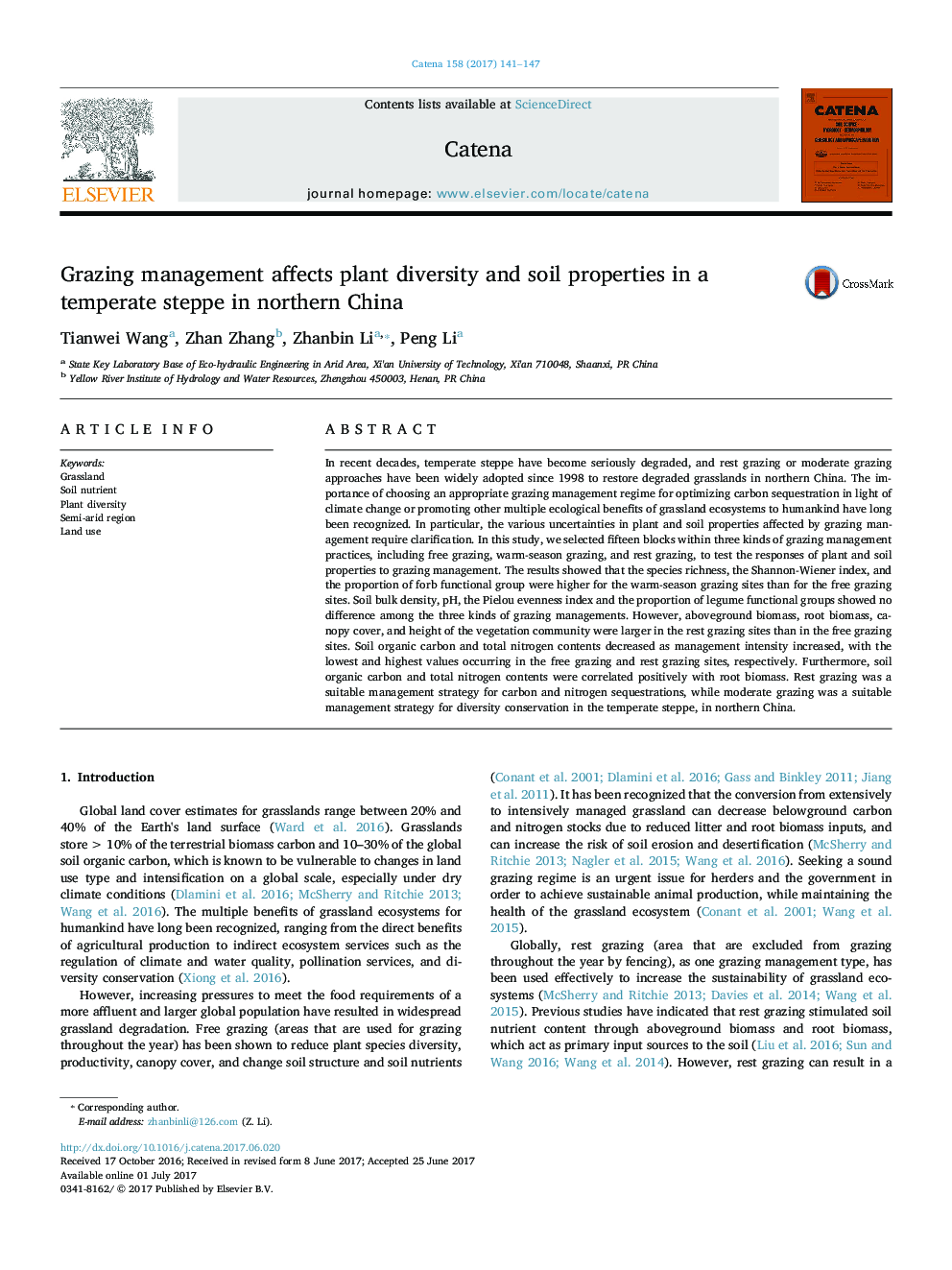| Article ID | Journal | Published Year | Pages | File Type |
|---|---|---|---|---|
| 5769899 | CATENA | 2017 | 7 Pages |
â¢Species richness, and Shannon-Wiener index were largest in the warm-season grazing sites.â¢Soil organic carbon and total nitrogen contents were largest in the rest grazing sites.â¢Soil organic carbon and total nitrogen contents were correlated positively with root biomass.
In recent decades, temperate steppe have become seriously degraded, and rest grazing or moderate grazing approaches have been widely adopted since 1998 to restore degraded grasslands in northern China. The importance of choosing an appropriate grazing management regime for optimizing carbon sequestration in light of climate change or promoting other multiple ecological benefits of grassland ecosystems to humankind have long been recognized. In particular, the various uncertainties in plant and soil properties affected by grazing management require clarification. In this study, we selected fifteen blocks within three kinds of grazing management practices, including free grazing, warm-season grazing, and rest grazing, to test the responses of plant and soil properties to grazing management. The results showed that the species richness, the Shannon-Wiener index, and the proportion of forb functional group were higher for the warm-season grazing sites than for the free grazing sites. Soil bulk density, pH, the Pielou evenness index and the proportion of legume functional groups showed no difference among the three kinds of grazing managements. However, aboveground biomass, root biomass, canopy cover, and height of the vegetation community were larger in the rest grazing sites than in the free grazing sites. Soil organic carbon and total nitrogen contents decreased as management intensity increased, with the lowest and highest values occurring in the free grazing and rest grazing sites, respectively. Furthermore, soil organic carbon and total nitrogen contents were correlated positively with root biomass. Rest grazing was a suitable management strategy for carbon and nitrogen sequestrations, while moderate grazing was a suitable management strategy for diversity conservation in the temperate steppe, in northern China.
